A conversation with Michael Gallagher
by Elizabeth Johnson, edited by Matthew Crain
A conversation with Michael Gallagher
by Elizabeth Johnson, edited by Matthew Crain
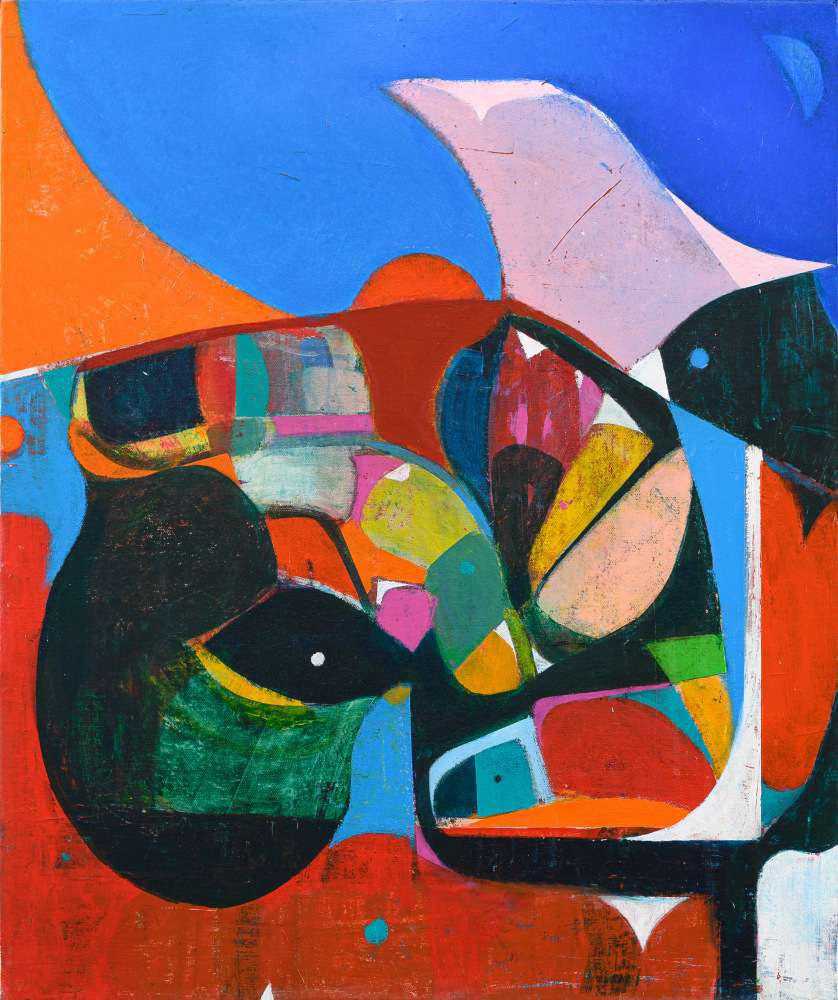
ART SYNC: POTENTIAL IMAGES
A conversation with Michael Gallagher
by Elizabeth Johnson, edited by Matthew Crain, 2022
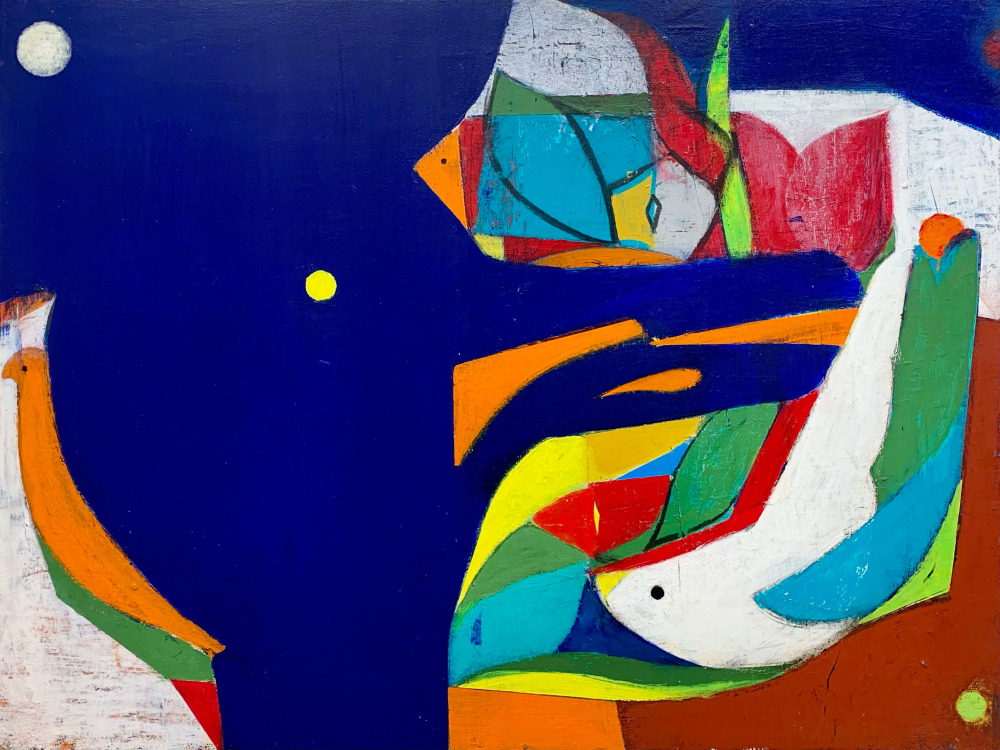
Precipice With Sun And Moon (Duck-Rabbit), 24" x 32", Acrylic On Canvas On Panel
Elizabeth Johnson: In your statement on the Gross McCleaf site, you use the term “slippage.” Does this reference Jacques Lacan’s theory of the unstable relationship between signified and signifier?
Michael Gallagher: I’ve been using “slippage” for decades. It’s not informed by any postmodern thinking, which I find mostly befuddling and obtuse on purpose. How I use the term relates not only to subject matter but also issues regarding space; the idea that a shape/form can occupy multiple spatial conditions and potential readings keeps me engaged in both making and looking.
In the ’80s I was painting on X-rays and black and white photographs of artworks from PAFA’s permanent collection. I discovered that I could use oil paint on these supports and transform the image in the direction of still life motifs, which was my main area of interest at that time. The finalized image retained elements of its original subject matter, thus offering two ways of seeing the image(s), a Duck/Rabbit thing, rooted in the complexities and pleasure of perception.
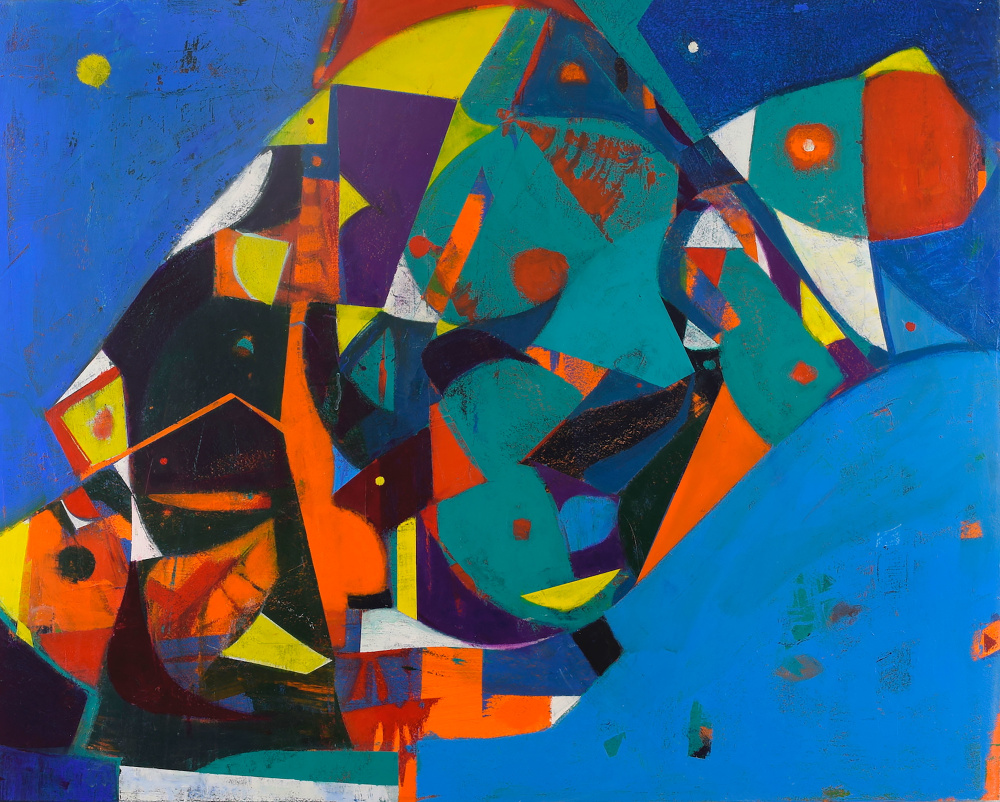
Night Fishing 2, 32" x 40", Acrylic On Panel
MG: By the time I get to my exhibition Hallucination Engine, I’m fully onboard with this train of thought and type of seeing. In 2014 I attended an exhibition of George Braque paintings, at Acquavella Galleries, in New York City. I bought the catalog and noticed Richard Shiff’s essay on Braque, titled “Infinition.” But I didn’t read the essay until last year. It clarified and enriched my understanding of what I’ve been doing for decades.
EJ: The Duck/Rabbit illusion helps to explain tricks in perception, since the visual model separates perception and interpretation by offering two mutually exclusive choices. (To Wittgenstein, there are three choices: duck, rabbit, and a continuous line.) We know there is more than one image, but we can mentally resolve only one at a time. Isn’t the Duck/Rabbit model skewed in your case, since you only allude to realistic subjects? Your abstractions hint at creatures within fish, bird, or tabletop shapes. Do you think that if your titles didn’t use bird or fish terms that you and your viewers would still see them in your work?
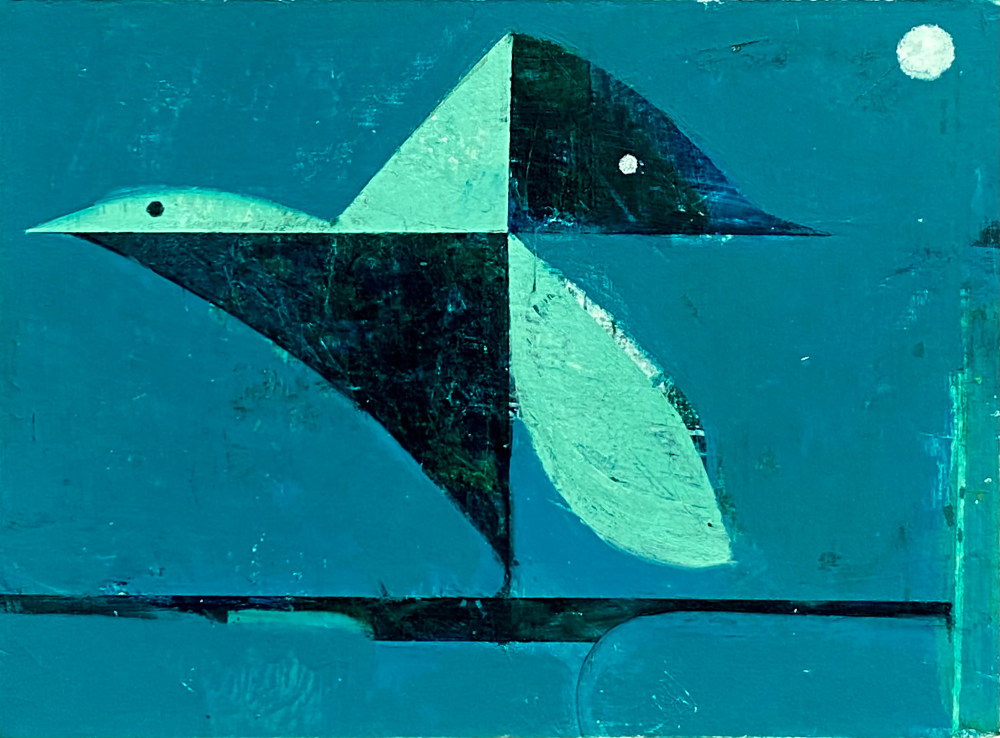
Trans-Continental, 7 7/8" x 10 5/8", Acrylic On Panel
MG: I believe the two images in the Duck/Rabbit model are mutually inclusive, not exclusive. “Not either or, but both and.” My abstractions are rarely devoid of subject matter, they always reference “things in the world.” Titles help propel a reading, but I also know that many read subject matter in the work, sans title. I test this all the time. Unfailingly, kids see what’s in the painting.
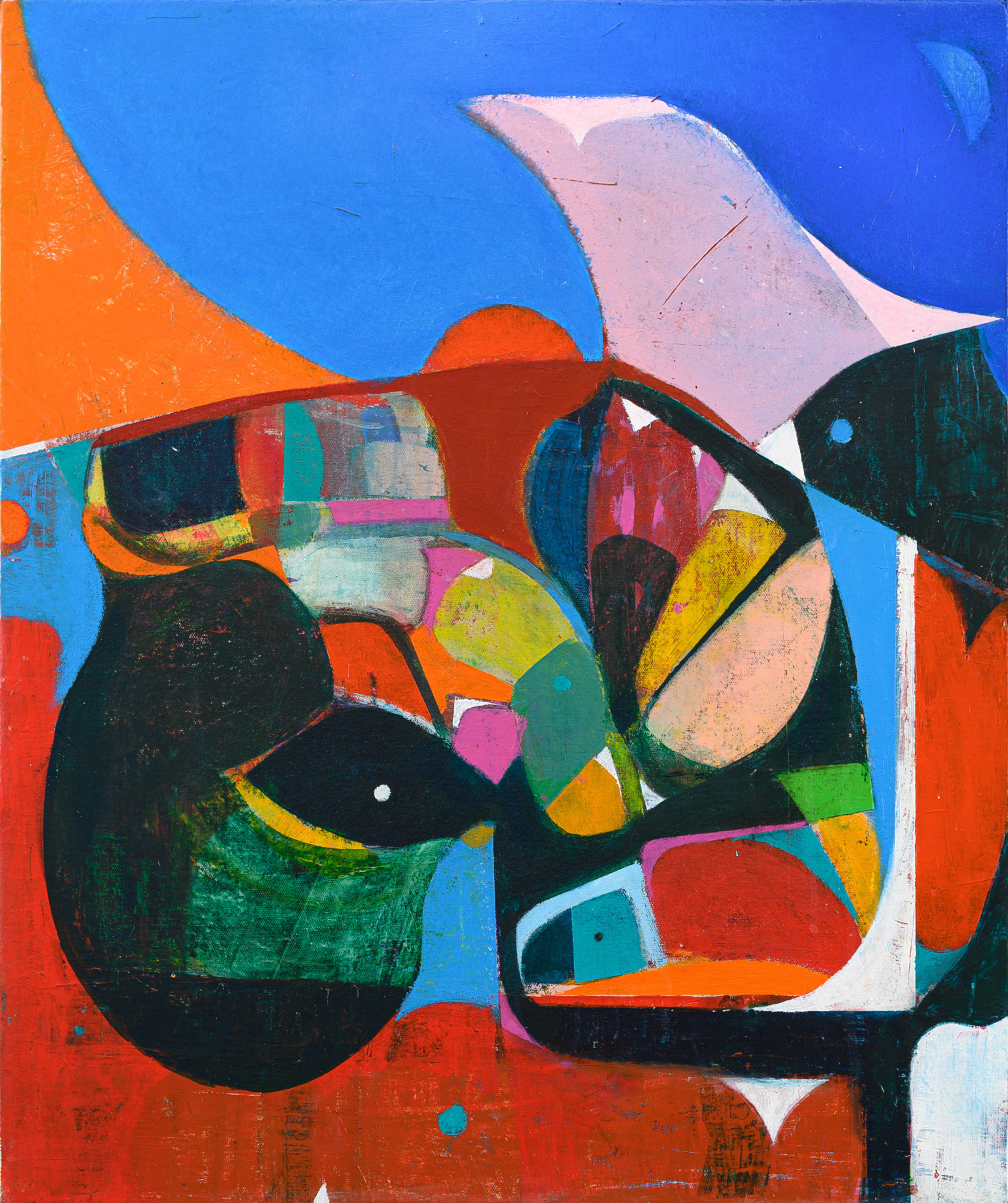
Bouquet, 24" x 20.25", Acrylic On Canvas Mounted On Panel
EJ: Do you like Amy Sillman’s work?
MG: I love what Amy Sillman does. The works that appeal to me most are the ones informed by Matisse and Diebenkorn. I have been deeply influenced by her work. Her 2008 Hirshhorn exhibition had a profound effect on my studio practice: it helped reinforce my move into more colorful, abstract work. Her nod to Ab Ex painterly painting was another plus. Perhaps most important was her use of “potential” subject matter and her rigorous pictorial structure. Charley Harper is one of my favorite artists. I think his work is genius.
EJ: Wow. Charley Harper! What a treat. I can see the connection, especially through carefree humor. It seems that your work expresses natural exuberance indirectly compared to Harper. Would it be possible for you to show the richness of life without creature or plant-like shapes? Does your personal default reading stay open and uncommitted to fresh readings over time?
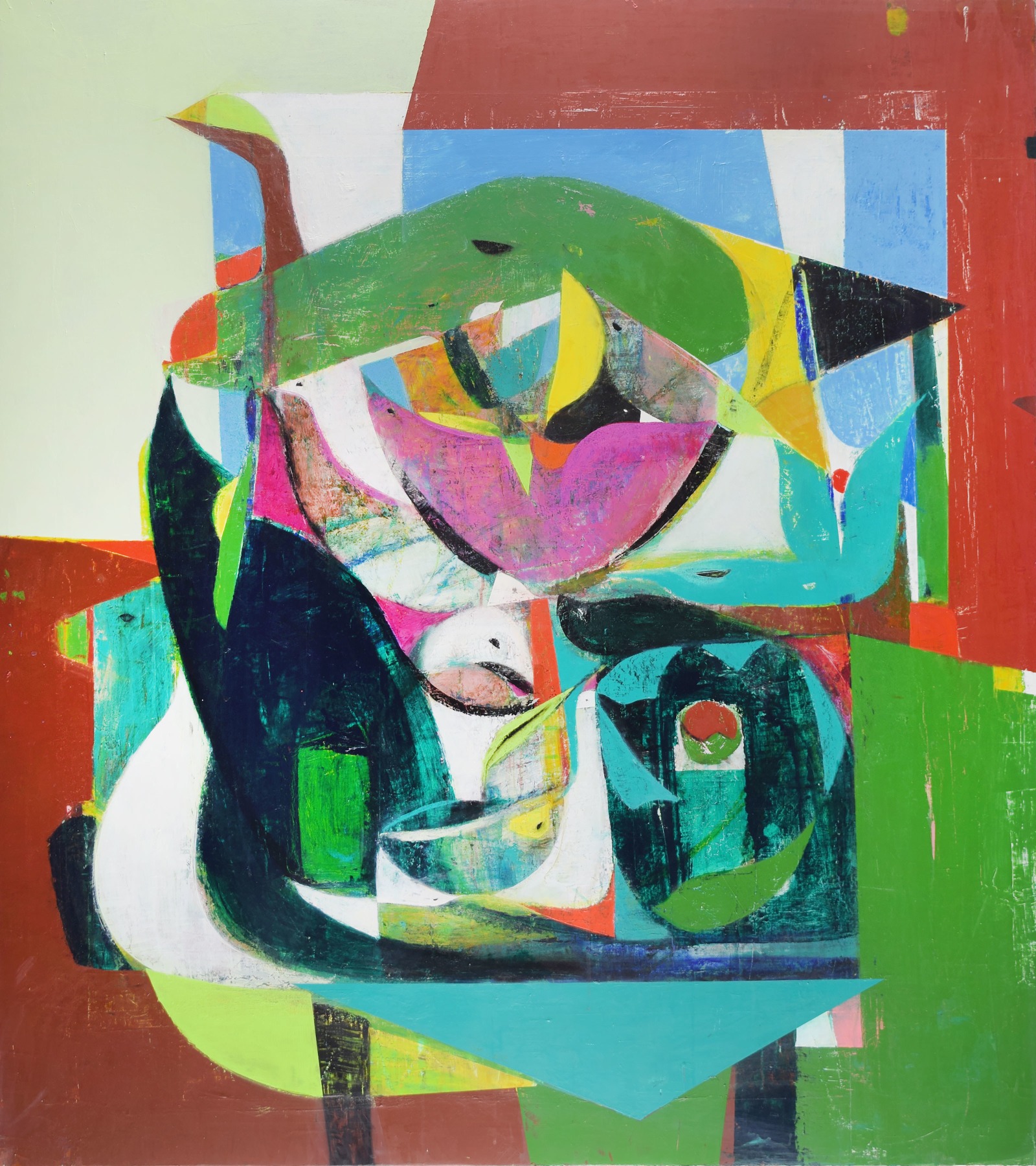
Tabletop Still Life With Tits And Peonies (After Hokusai), 51.5" x 46", Acrylic On Canvas On Panel
MG: I always stay open to multiple readings. As for Harper, I discovered him late in the game. I was already making flat/geometric/modernist-influenced paintings that employ table-top still life motifs and bird imagery. I have been making naturalistic still life/bird paintings for two decades. When I began making abstract works, I brought the subject matter along for the ride. I suppose I could jettison the subject matter and still show the richness of life. Perhaps that’s next.
Long story short: In 1996 I began showing naturalistic paintings. Making these paintings became increasingly difficult––physically difficult––and in 2005 I was diagnosed with ALS. Thankfully the diagnosis was incorrect. When I returned to the studio, I began to move into larger, more abstract work. I had my first fully “abstract” exhibition in 2009. We were coming off the 2008 recession and I figured no one was going to be buying art anyway and what did I have to lose.
EJ: Your earlier realistic works are quite different: velveteen fruit, jewel-like butterflies, birds that hide among and can be seen as fruit, and you use soft shadows or chiaroscuro. The slippage, the urge to transpose shapes, was bubbling up then. Do you see this in Exit Flagger?
MG: In/as. Both/and. ––I’m good with that. By 2009, the double read was beginning to take hold, and it’s evident in Flagger.
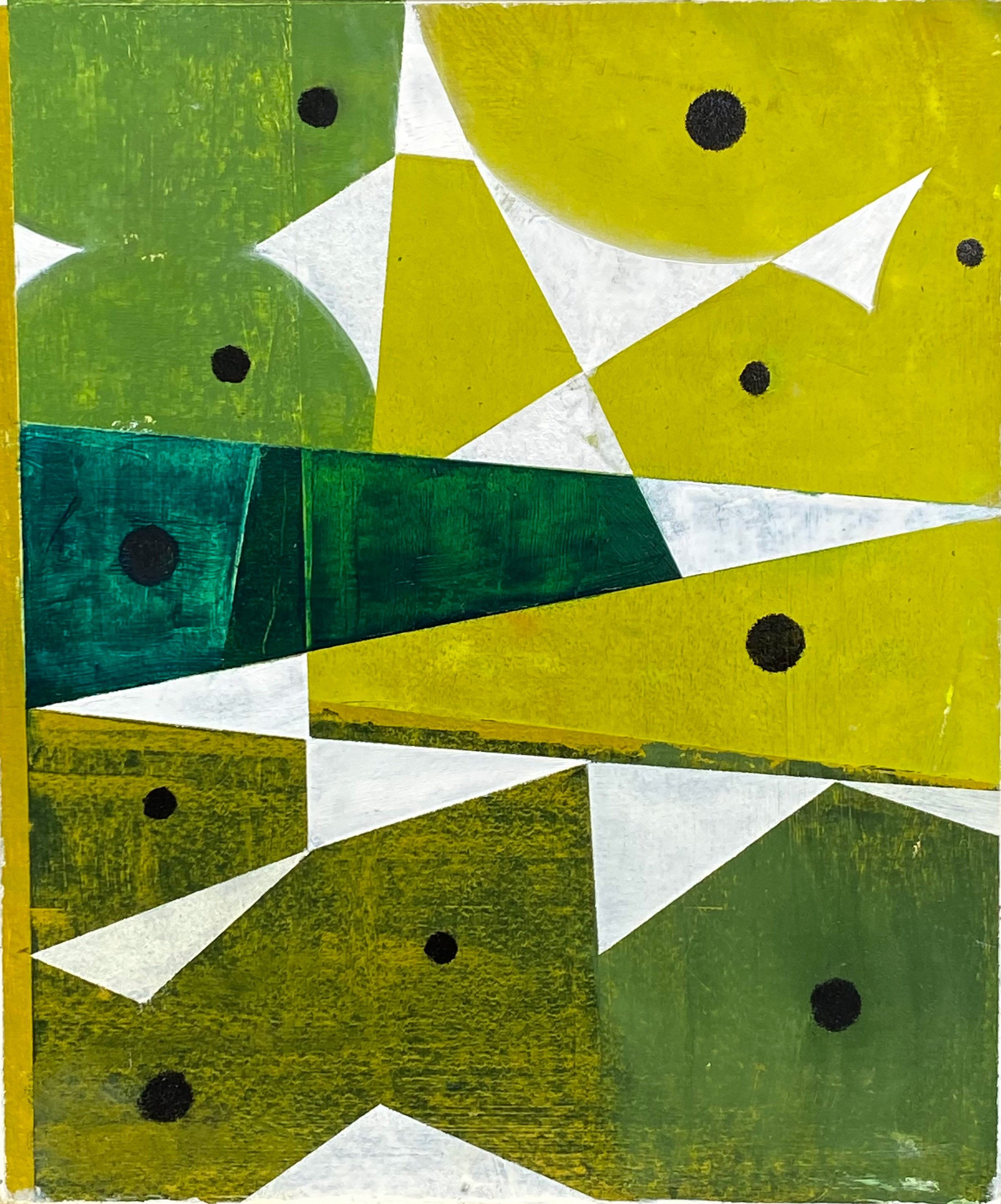
Flock, 10.75" x 9", Acrylic On Panel
EJ: In your statement, you say, “. . . making sense out of nonsense that slips back into nonsense and making floppy-floppy, and ‘looking good’ doing it’" makes me think of slapstick and Charlie Chaplin. The absurd and physical comedy seems part of what you do. There is a dorky, awkward quality that I like. Do you work from a humorous place that straddles abstraction and realism?
MG: That quote is a mash-up of a few different borrowed lines/ideas. All the works in that exhibition (Hallucination Engine) used titles from song titles. “Making flippy floppy” is a line taken from the Talking Heads song. “Looking good” is a playful take on Good Looking: Essays on the Virtue of Images, the book by Barbara Maria Stafford. It’s a way of saying that when we look, we should look deeply, with a rigor, as opposed to quick and lazy, which is what most looking is.
I welcome the absurd/dorky/awkward/art nerd references; they’re something I share with Amy Sillman. In an article titled “Fictions of Origin” (taken from the Hirshhorn exhibition) Sillman states that it is often the mis-read of works of art that prove to be the most interesting/useful. I certainly agree with that sentiment.
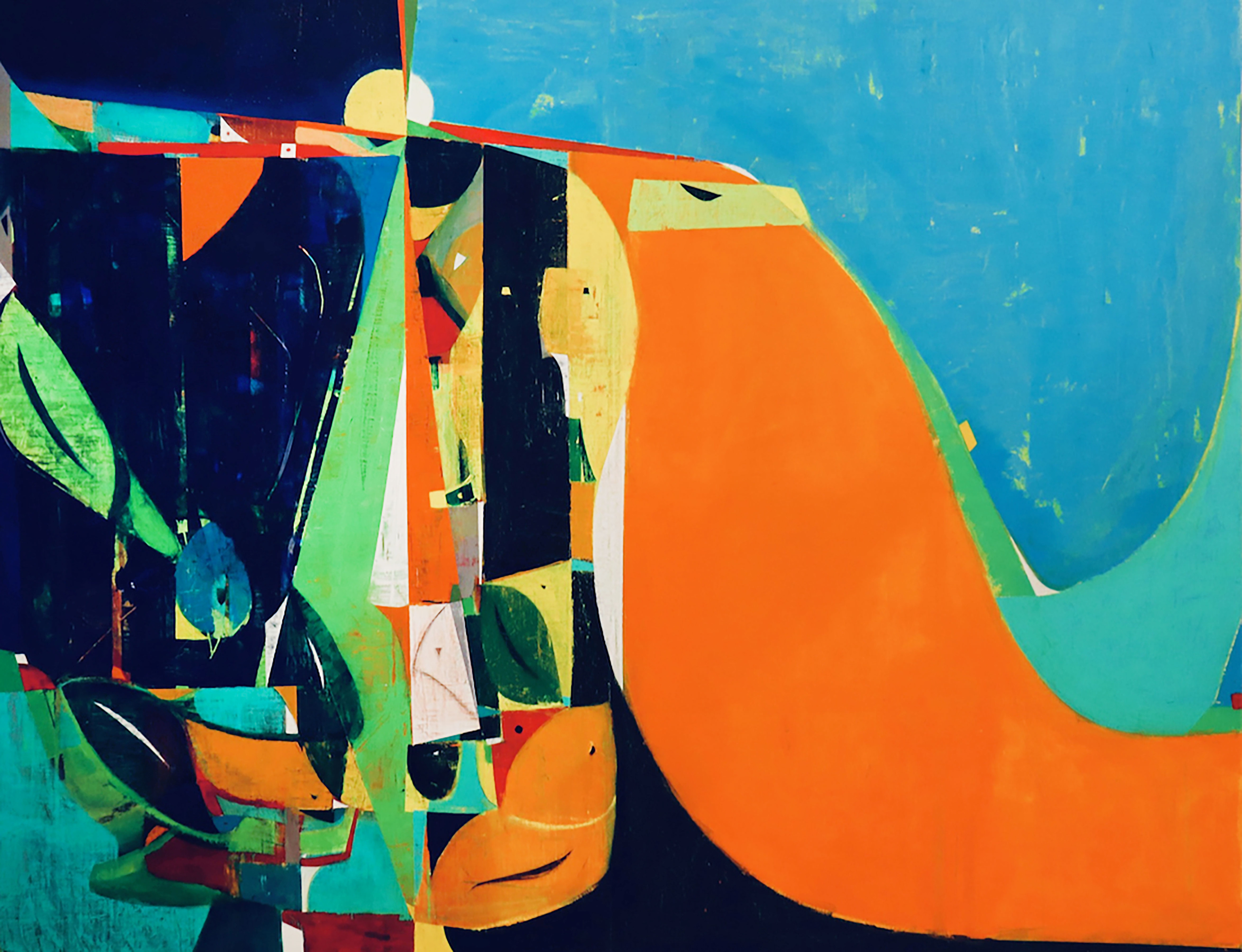
Orange Hill (24 Hour Aviarium), 74" x 95.5", Acrylic On Linen On Panel
EJ: Your piece Orange Hill (24 Hour Aviarium) is structured around a central wave shape that divides small shapes on the left from a large orange area on the right, like the yinyang symbol. Smaller shapes curve and come alive suggesting random eyes or mouths. Did you start with the larger gestural divisions and respond to the implied dynamics of the composition? It seems that you pay attention to how energy travels though shapes and connects them as pathways. Did you work on the painting and then name it afterwards, or did you nurture the bird feeling throughout?
MG: Yes, to everything you mention regarding shapes and spaces.
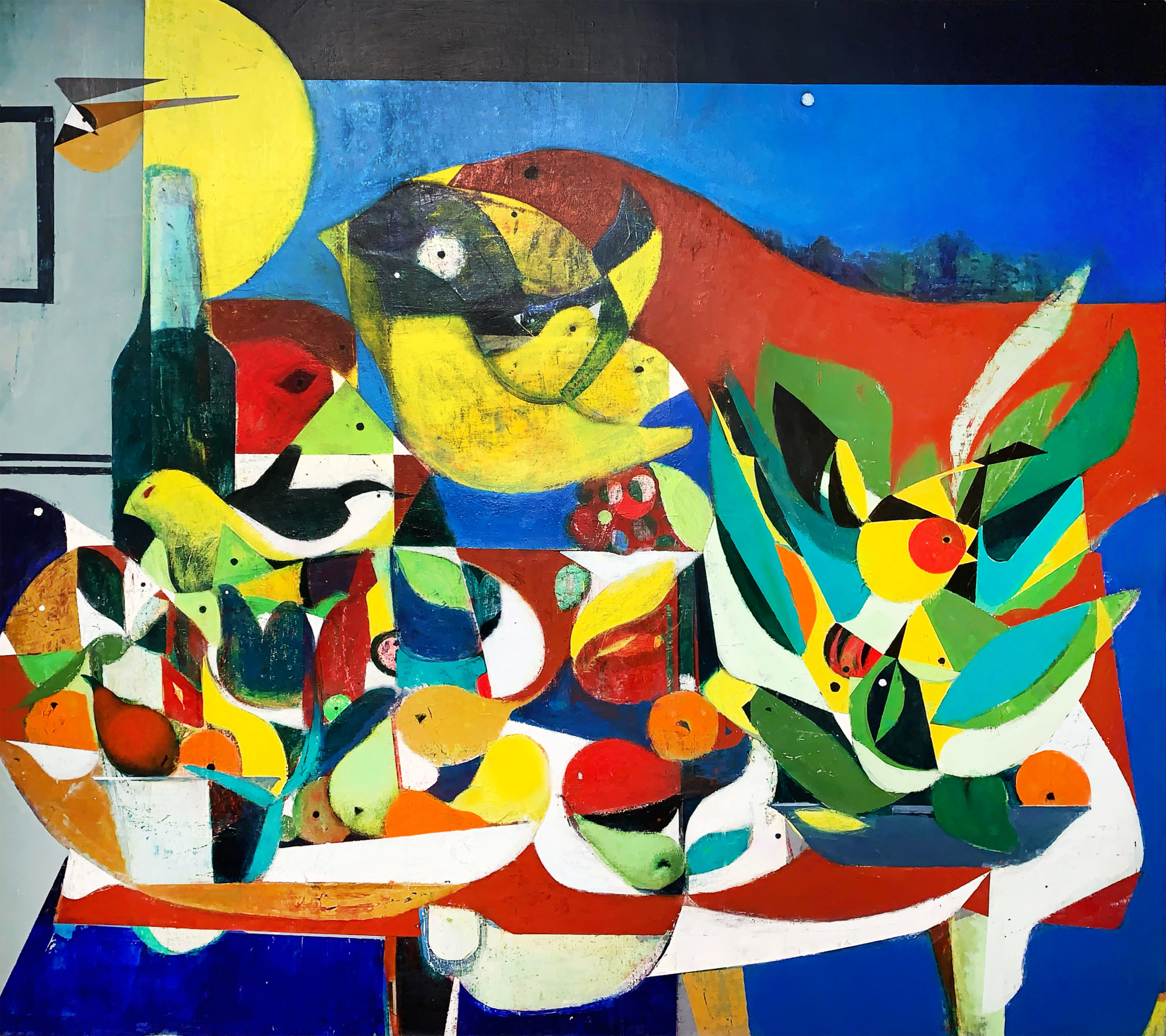
Studio 2, 46" x 54.75", Acrylic On Canvas On Panel
MG: In Orange Hill the title sets the viewer up to see the image in a particular way and the subtitle confounds that singular read. The “orange hill” is obvious (the title tells you that), the possibility that it could simultaneously be read as a large orange bird (a hummingbird, to be exact) is provided by the subtitle. After that, multiple readings are fair game and encouraged. Yes, large shapes (generally but not always) precede the smaller ones. Titles usually come at the end but occasionally a title will reveal itself midstream and that helps me resolve the piece.
EJ: I want to go back to “Infinition,” the Shiff essay on Braque. In it Shiff states that: “. . . the subject (what we usually mean by ‘subject matter’ or ‘content’) remains as an arbitrary feature while the essential subject lies elsewhere: in feeling.” You present building blocks of imagery assembling and disassembling, but your subject matter seems to be joy. Now that your work is helping me perceive what I am being conditioned to see, I am seeing smiles and eyes in all your pictures.
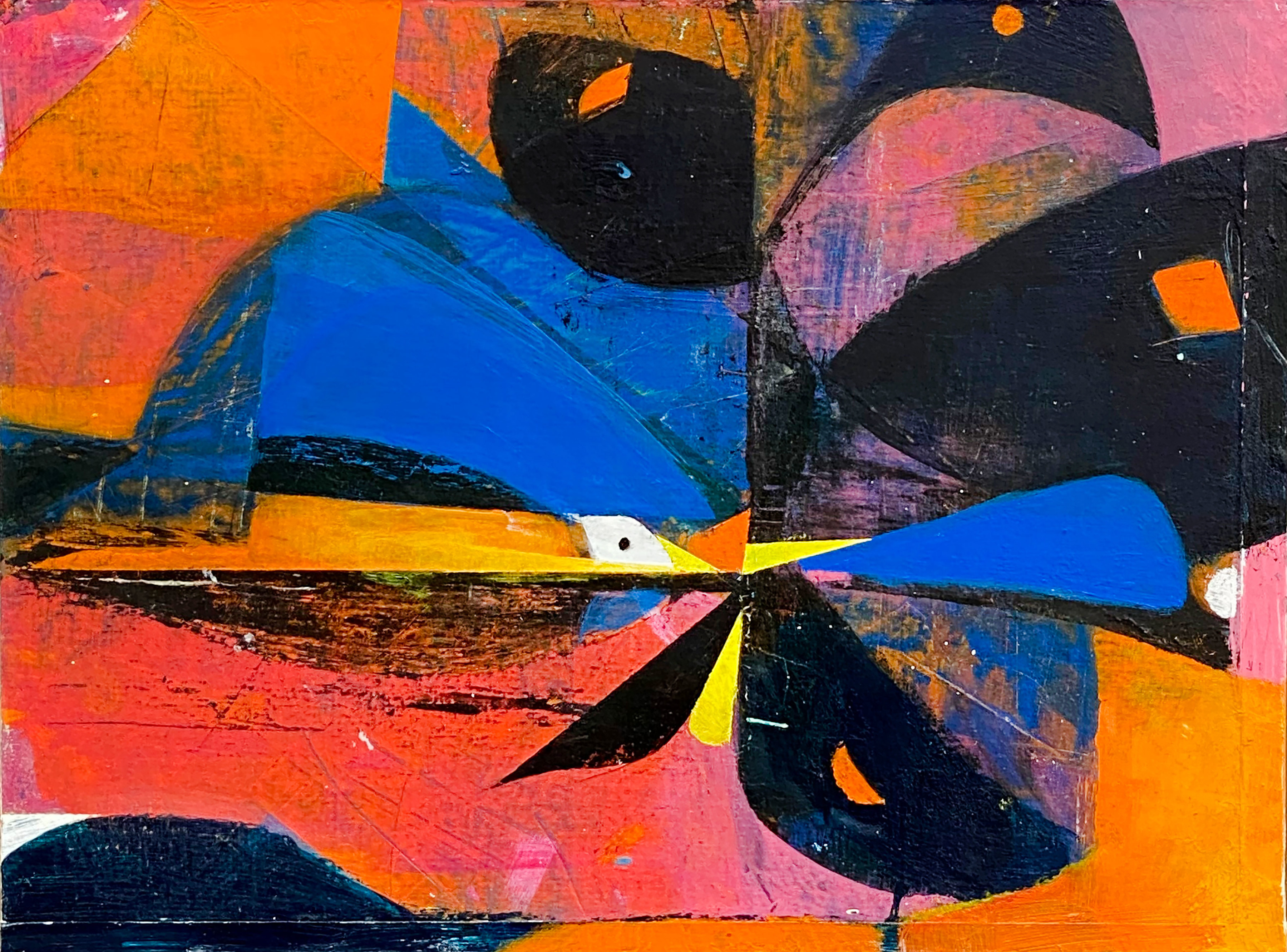
Black Flower, Hyperdrive, 8.5" x 11.5", Acrylic On Panel
MG: Richard Shiff is one of my favorite art writers. But in my lexicon, subject matter is not the same as content. I use the term “subject matter” to describe what can be seen and named in a work of art. “Content” refers to what the work is “about.”
I do agree with him that Braque’s work privileges “feeling” over specificity regarding form; hence the ambiguity of much of his subject matter. Joy and humor are important to me––we have plenty of sturm and drang to deal with today. To paraphrase Dave Hickey: Art is the antidote to everything else. Eyes and smiles are new. I see them now.
––Elizabeth Johnson
edited by Matthew Crain
April 2022
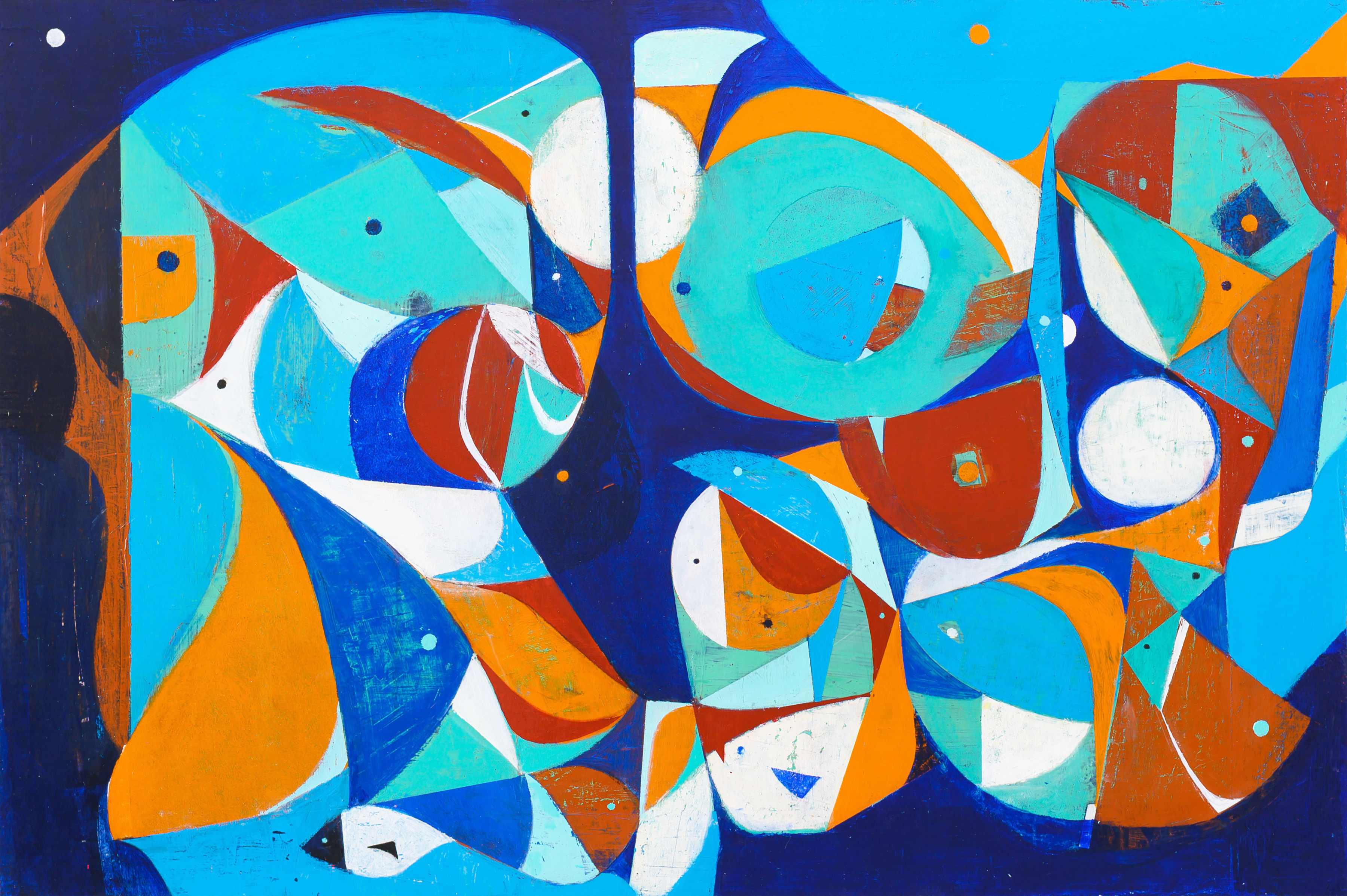
Another Blue World (Twenty-Four Hour Aquarium), 32" x 42", Acrylic On Canvas On Panel